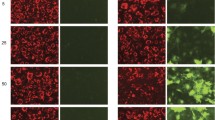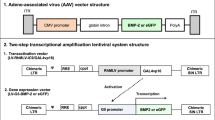Abstract.
In order to assess efficient DNA gene transfer into human primary cell cultures derived from the skeleton we tested two viral-based procedures. First, replication-deficient recombinant adenoviruses (ADV) were used to infect post-confluent human marrow stromal fibroblasts (HMSF) and human trabecular bone (HTB) cells. Both cell types were readily infected by modified adenoviral vectors carrying a reporter gene making this virus an attractive candidate to facilitate DNA gene transfer. In a second approach we coincubated DNA with ADV that had polylysine (PLL) covalently attached. With this ADV/PLL/DNA complex, very efficient gene transfer into multilayered HMSF and HTB cell cultures was observed, and DNA coincubated with unmodified ADV failed to be effectively transferred. These data imply that the covalently bound PLL more effectively binds exogenous DNA, resulting in a highly efficient internalization event in both cell types. Thus, this latter method has many advantages over conventional ADV gene transfer procedures. It is simple, rapid, and it does not require engineering of DNA into the viral genome, thereby allowing transfer of large fragments of DNA.
Similar content being viewed by others
Author information
Authors and Affiliations
Additional information
Received: 15 July 1997 / Accepted: 9 July 1998
Rights and permissions
About this article
Cite this article
Sommer, B., Kuznetsov, S., Robey, P. et al. Efficient Gene Transfer into Normal Human Skeletal Cells Using Recombinant Adenovirus and Conjugated Adenovirus-DNA Complexes. Calcif Tissue Int 64, 45–49 (1999). https://doi.org/10.1007/s002239900577
Published:
Issue Date:
DOI: https://doi.org/10.1007/s002239900577




